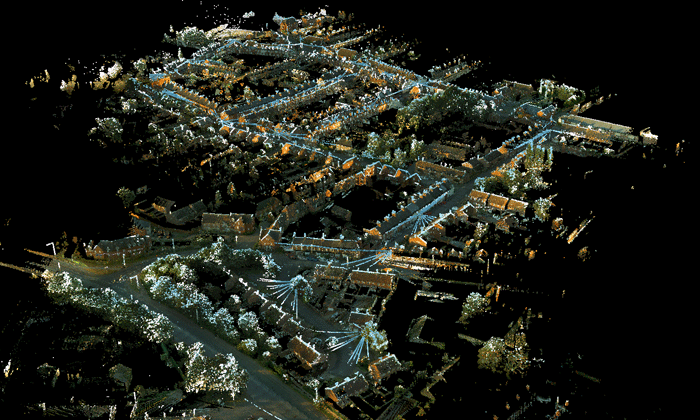A mobile mapping device from Topcon has allowed companies working on a sewerage upgrade in Newark, Nottinghamshire to better understand the town’s layout, minimising traffic disruption and eliminating risk to historic buildings
At a cost of £60 million, the upgrade of Newark’s sewerage network is a significant undertaking for the historic Nottinghamshire market town. The project, known as the Newark Waste and Water Improvement Project, will be carried out on behalf of water company Severn Trent and see around 12 kilometres of open-cut sewers of varying diameters laid in and around Newark. At the same time, tunnelling will be carried out to create a 6 kilometre ‘super sewer’ to increase capacity on the town’s existing network.
Two organisations are pooling their expertise and resources on the project. They are the NMCNomenca division of North Midland Construction (also known as NM Group) and Barhale Construction. Together, they form the BNM Alliance.
Before the alliance could begin work, it needed to have a complete picture of the lay of the land. This meant mapping the 30-square metre area earmarked for the sewer development, in order to understand the precise location of streets, A and B roads, railway lines, historic buildings and other landmarks.
Using traditional surveying techniques, this phase of the project might have taken up to ten weeks to complete and required the additional support of a team of external contractors to carry out measurements by hand.
It had the potential to be disruptive for local people, too, says Andy Clarkson, senior engineer at NMCNomenca. “With so many people working across the area being mapped, we would have had to put traffic management procedures in place along the roads and railway lines,” he says.
A different approach
The BNM Alliance decided to take a different approach, opting instead for a vehicle-mounted, mobile mapping device, using the IP-S3 HD1 from Topcon. This system can be fitted to any vehicle, supporting rapid collection of data without the need for traffic management or road closures. The point cloud and imagery data collected can then be integrated into existing workflows or used as part of BIM modelling and visualisation processes.
Weighing in at just 18kg, the IP-S3 HD1 is compact and can be combined with a quick-release roof mount, so that it can be quickly fixed to the vehicle by one person working alone. The BNM Alliance found that this saved time.
The data gathered by the device, meanwhile, has given the BNM Alliance a more complete and accurate snapshot of the area than would have been possible using traditional, topographic mapping techniques. On this project, it eliminated the need for additional site visits by the five design companies working on the project.
Mobile mapping will also contribute to the preservation of Newark’s unique character, according to Clarkson. “The town’s so old in places, but the mobile mapping device has allowed us to pick out structures of special interest that we would not otherwise have spotted,” he says. “This means that the designers of the sewer can input a wealth of additional data into BIM models. With this, they can change the location of shafts, say, or the direction or diameter of the sewer, to protect historic buildings and cut out the need for inconvenient surface works.”
The work in Newark is ongoing – it’s scheduled to be completed in 2019 – and the BNM Alliance design team is finalising its plans for the super sewer, again with the help of information provided by Topcon’s IP-S3 HD1.
If you enjoyed this article, subscribe to AEC Magazine for FREE






